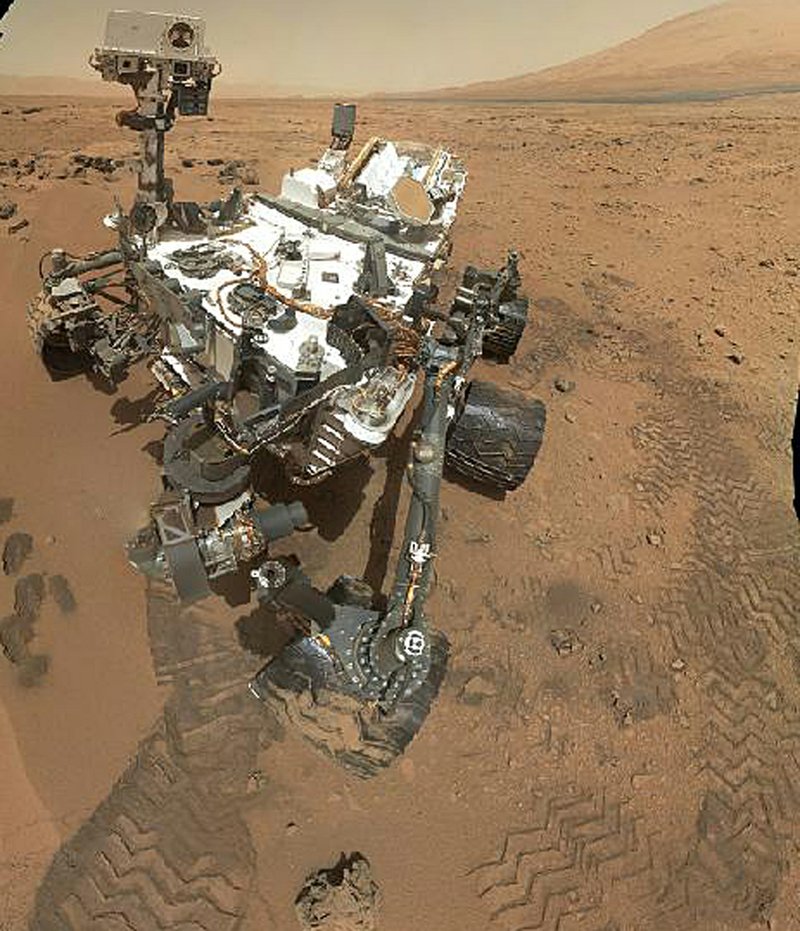LOS ANGELES — NASA’s Curiosity rover has indeed found something in the Martian dirt. But so far, there’s no definitive sign of the chemical ingredients necessary to support life.
A scoop of sandy soil analyzed by Curiosity’s sophisticated chemistry laboratory contained water and a mix of chemicals, but not complex carbon-based molecules considered essential for life.
That the soil was not more hospitable did not surprise mission scientist Paul Mahaffy, since radiation from space can destroy any carbon evidence.
“It’s not unexpected necessarily,” said Mahaffy of NASA’s Goddard Space Flight Center, who is in charge of the chemistry experiments. “It’s been exposed to the harsh Martian environment.”
The latest findings were presented Monday at a meeting of the American Geophysical Union in San Francisco. The mission, managed by the NASA Jet Propulsion Laboratory, is trying to determine whether conditions on Mars could have been favorable for microbes when the red planet was warmer and wetter.
So what did Curiosity find after baking the soil and analyzing the resulting gases?
Water, sulfur and perchlorate, a highly oxidizing salt that was also detected by one of NASA’s previous spacecraft, the Phoenix lander, in the northern Martian latitudes.
“This is typical, ordinary Martian soil,” said mission scientist Ralf Gellert of the University of Guelph in Canada.
The rover did detect hints of a simple carbon compound, but scientists don’t yet know whether it’s native to the planet, came from space or hitchhiked from Earth.
Scientists think the best chance of finding complex carbon is at Mount Sharp, a mountain rising three miles from the center of Gale Crater near the Martian equator. Curiosity won’t trek there until early next year. Images from space reveal intriguing layers at the base and many think it’s the ideal place to search for carbon.
The Curiosity team has been under pressure to announce a blockbuster find ever since the car-sized Curiosity made its dramatic landing in early August using a never-before-tried technique that involved gently being lowered to the ground by cables.
The first month of a two year mission was dominated by health checkups - a requirement for every interplanetary spacecraft. Since then, it has been on the move, scooping up soil and hunting for its first rock to drill into.
While Curiosity has beamed back stunning panoramas of its surroundings, its major discovery so far is uncovering the remnants of an ancient streambed. Michael Meyer of NASA headquarters called Curiosity a “CSI laboratory on wheels” that has already revealed a lot about its surroundings.
At $2.5 billion, the Curiosity mission is the most expensive yet to Mars, which has been studied by various, less capable rovers and landers. Curiosity totes around high-tech tools designed to explore the Martian surface in unprecedented detail.
Meanwhile, NASA’s long running Voyager 1 spacecraft has entered a new region at the edge of the solar system and is close to exiting it forever.
Voyager 1 and its twin Voyager 2 were launched 35 years ago on a tour of the outer planets. Afterward, both spacecraft continued to hurtle toward the fringes of the solar system.
Mission chief scientist Ed Stone says it’s unknown when Voyager 1 will finally break through to interstellar space. Once that happens, it’ll be the first man made object to leave the solar system.
Front Section, Pages 4 on 12/04/2012

